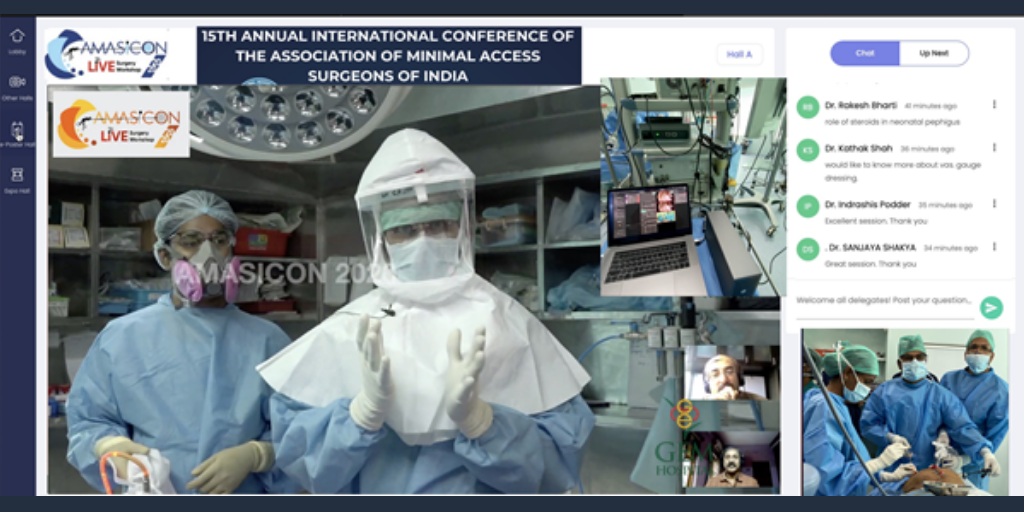AWS Public Sector Blog
Category: Customer Solutions
Edunation scales up to 32 times activity by boosting infrastructure with AWS
Using AWS, Edunation seamlessly responded to increasing demand during the COVID-19 pandemic. Edunation collaborates with top educational institutions across the Middle East and North Africa (MENA) region and provides all-in-one learning and school management solutions. Today, the EdTech is on a mission to push learning management systems (LMS) beyond virtual classrooms.
The power of positive disruption: four ways cloud-based learning is transforming the global classroom
The surge in cloud-based online learning is “positive disruption,” said Melissa Loble, chief customer experience officer at Instructure, the maker of Canvas. She believes online learning has transformed the classroom on a global scale—in many ways for the better. Read four ways that Canvas and other cloud-based learning platforms have disrupted the educational landscape, both for traditional colleges and universities and global programs.
EdTech startups use Amazon Alexa to improve learning and enhance accessibility
Families and students now learn with Alexa in their homes, and EdTech companies are using Alexa to help bridge the gap in engaging and accessible at-home learning. Two EdTech startups, NuMoola and Ecree, announced Alexa skills to help facilitate student learning using voice.
Mediknit delivers high-def global surgery workshop with AWS Media Services
Mediknit is an online academy marketplace for healthcare professionals to access on-demand, need-based upskilling programs and professional development programs created by verified educators across the globe. In collaboration with GEM Institute of Laparoscopy and Robotic Surgery, Mediknit provides live surgery streams via the GEM Televersity portal for the continuing medical education (CME) needs of surgeons. With AWS, Mediknit scaled to meet the demand to provide this streaming solution across the globe.
Paris-Saclay University uses AWS to advance data science through collaborative challenges
This is a guest post by Maria Teleńczuk, research engineer at the Paris-Saclay Center for Data Science (CDS), and Alexandre Gramfort, senior research scientist at INRIA, the French National Institute for Research in Digital Science and Technology. Maria and Alexandre explain how they adapted their open source data challenge platform RAMP to train the models submitted by student challenge participants using Amazon Elastic Compute Cloud (Amazon EC2) Spot instances, and how they leveraged AWS to support three student challenges.
Improving pandemic response, citizen services, and assessing beehive health: The latest from AWS Cloud Innovation Centers
Cloud Innovation Centers (CICs) powered by Amazon Web Services (AWS) aim to empower public sector organizations to quickly create and test new ideas using Amazon’s innovation methodology. With the CIC program, students and researchers, along with AWS teams, focus on solving real-life societal challenges facing the public sector. Learn more about some of the digital solutions on challenges the CIC team published over the last quarter such as working to prevent opioid overdose, discovering new coronaviruses, and using machine learning to monitor beehive health.
Modernizing mission critical transportation technologies in the cloud
In state and local government transportation, infrastructure owners like departments of transportation, traffic agencies, tolling authorities, public transit agencies, airports, and seaports, all strive to operate more efficiently. They’re working to deliver safe, dependable, and equitable transportation experiences to citizens, regardless of how, when, or where they travel. Forward thinking public agencies are turning to a new breed of solutions provider—one not tied to a legacy framework that cannot address current traveler needs. They work with system integrators, independent software vendors, and consultants to innovate using AWS to improve traffic safety, construction project management, analytics and reporting, and secure identification.
Bringing cloud capability to the Air Force at the “speed of mission need”
AWS recently participated in a technical demonstration, known as “On-Ramp 4,” to test edge computing capabilities for the Air Force’s Advanced Battle Management System (ABMS). ABMS is the Air Force’s contribution to the DoD’s Joint All Domain Command and Control (JADC2) vision. Under a Cooperative Research and Development Agreement (CRADA) with ABMS, AWS tested the ability to successfully integrate and deploy a tactical edge node solution leveraging highly resilient network connectivity and communications.
We Build it Better empowers middle school students with engaging STEAM education
Children become aware of traditional careers at a young age. But the careers in modern science, technology, engineering, arts, and mathematics (STEAM) that are likely to be among the most in-demand when the children enter the workforce aren’t traditionally introduced to younger students. Many cloud occupations are absent in the aspirational pathways commonly discussed in STEAM education. Aspiring tech students are not aware of the full breadth of cloud jobs that exist, and are often pushed a narrow view limited to coding, video game production, and software development. To address these gaps, Amazon Web Services (AWS) and Flight Works Alabama (an Airbus Americas 501c3) created the program We Build It Better.
Using AI to rethink document automation and extract insights
The maturing of artificial intelligence (AI) has brought ready-made services that organizations can use, not only to automate data entry work but also to apply intelligence into the business process. Using modern AI capabilities on AWS, organizations can transform approaches to document management. This allows public sector organizations to save time (enabling faster throughput especially during higher volume paperwork times), so they can help get constituents their services faster, and focus on the most valuable work of the high-touch or high-need cases. Document automation helps reduce human entry error and provide backup services in case of natural disaster.









